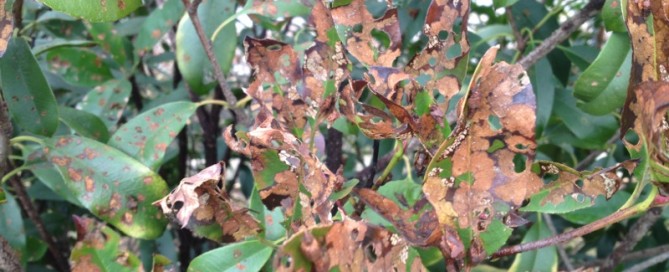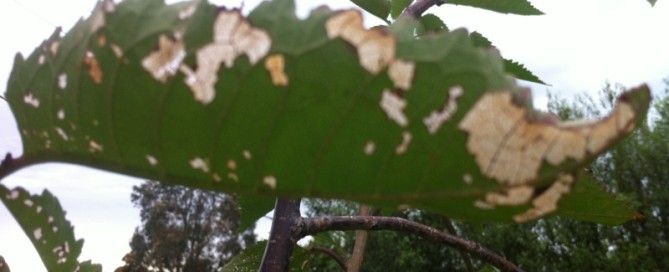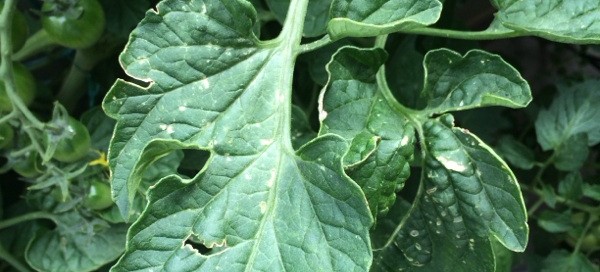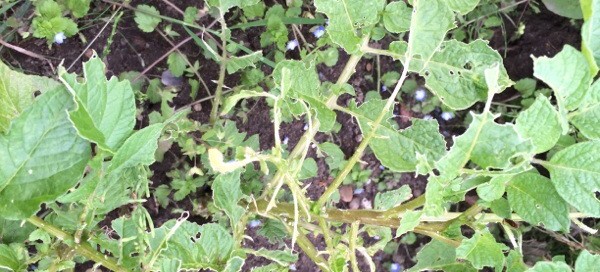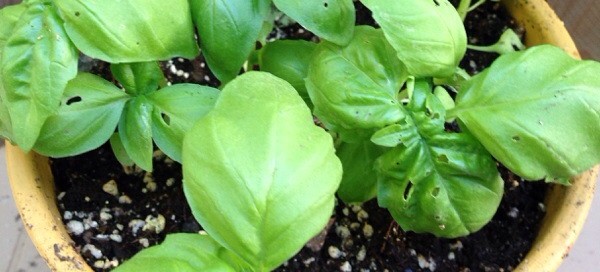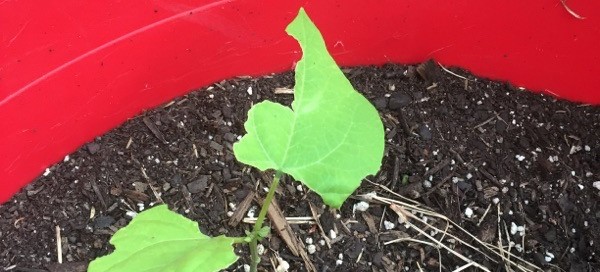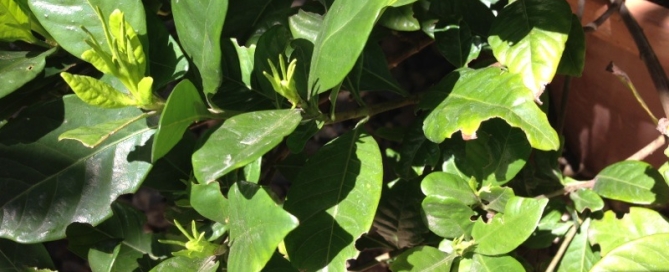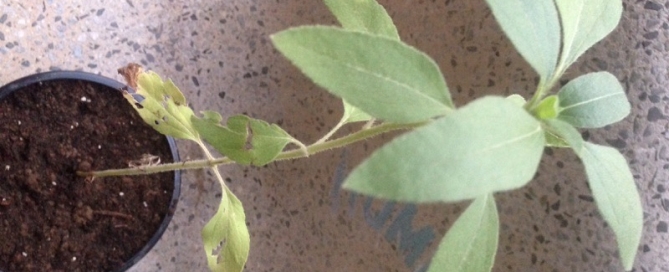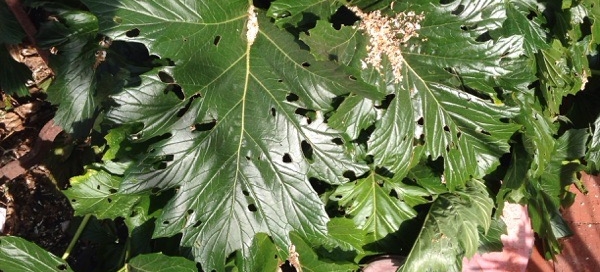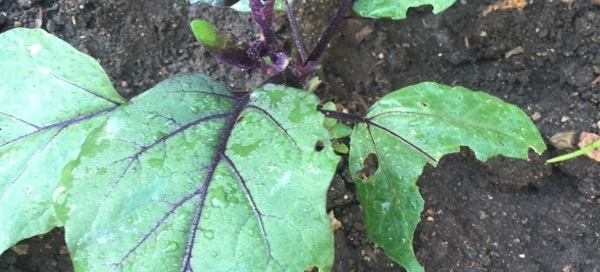Chewing Insect
The problem may be chewing insects such as grasshoppers, beetles, caterpillars, etc.. Have you looked at the undersides of the leaves for a caterpillar? If you don't see an insect, we would normally suggest you cut off all the damaged foliage but since your plant has so many leaves affected, leave them be and check the unaffected leaves several times a day to see if it's on-going. Chewing insects are usually large enough to see with the naked eye, but they can be green, so look closely. If it is a chewing insect, spray with an organic control such as Spinosad - it has a 7-10 day residual - but spray in the early evening after the bees have returned to their hives. Once the spray has dried it is safe for beneficials. There are also synthetic systemics but make sure it is formulated for photinias. Suggest you show a few of these leaf samples to a horticulturist at a garden center for confirmation of the problem and suggested controls.
